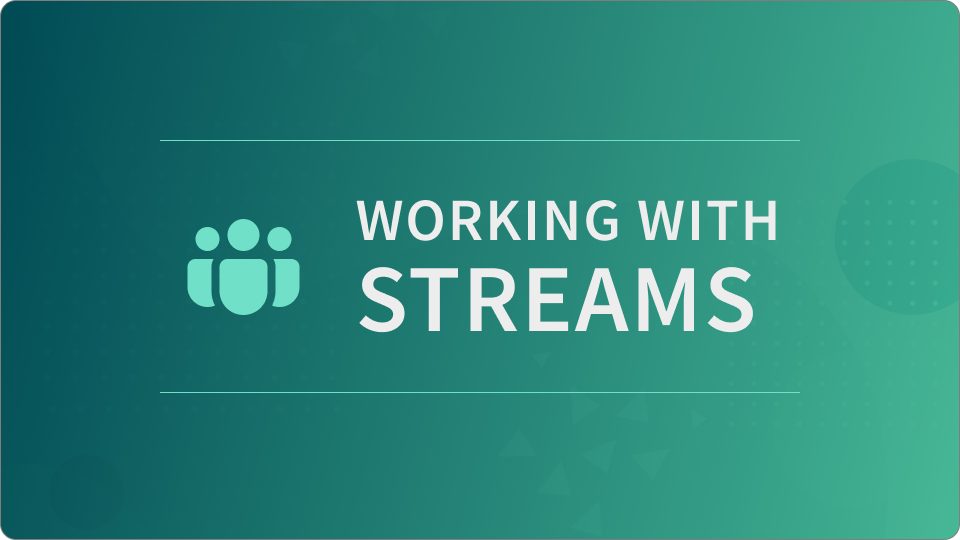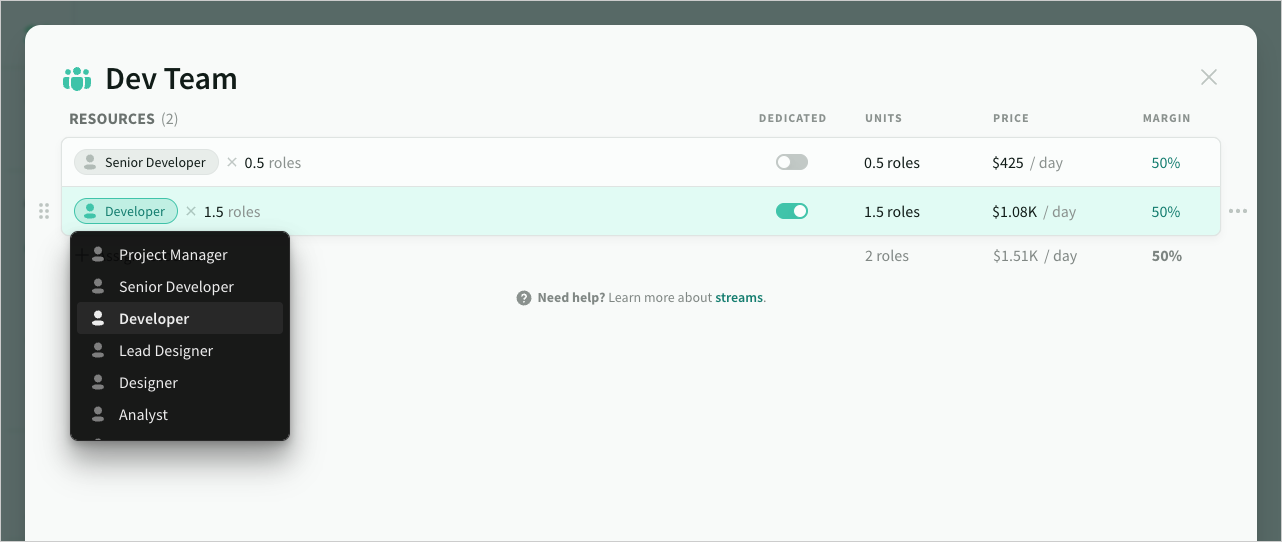Working with streams

IN THIS ARTICLE
Streams are a powerful yet simple concept in Estii. This guide provides use-cases and recommendations to help you get the most out of them.
Introduction
How you use streams will depend on the granularity of your estimates and existing preferences. If you estimate in days or dev days, start with blended or loaded single resources. If you estimate in sprints or months (e.g. an annual budget), consider loaded teams or squads.
Once you have these baseline streams defined, allocate them into secondary streams that represent typical outputs, deliverables, or services common to most projects.

Single resources
Rather than estimate against individual roles, you can use streams to create hybrid resources with a split of allocations across multiple role types.
There are two common use-cases: blended resources and loaded resources
Blended resources
A blended resource is a stream comprised of 2 or more roles that adds up to 100%
Blended roles simplify estimating across multiple skill levels of the same role type, and standardising the ratio of skill levels in a team.
When scheduling a phase, Estii automatically rounds up partial resources to the nearest 100% or 50% to ensure there aren’t any resource gaps
Benefits
- Keeps split of skill levels standardised across deals
- Less individual estimations per task or features
Loaded resources
A loaded resource is a full role (100%) with partial allocations of related supporting roles
Fully loaded resources make it easier to maintain the ratio of related roles, while still estimating against a single primary role type.
Many software companies estimate in dev days rather than creating seperate estimates for every skill type required to deliver a feature
Benefits
- Keeps ratio of supporting roles consistent irrespective of overall scale
- Keeps estimations simple
Agile teams and squads
Many larger product companies use scaled agile or feature squads to deliver multiple features in parallel. Streams makes it easy to price standard teams or squads that are funded over longer periods of time (like an annual product budget).
Benefits
- Standardise the ratio of resources/allocations within a team
- Estimate against a team rather than an individual resources
Feature squads
A feature squad is a long-lived, cross-functional, cross-component team that completes many end-to-end customer features
Generic teams and services
Even if you don't use scaled agile or squads, you can still benefit from standardised teams for functional areas or services.
Streams as deliverables
Streams can be used to represent individual deliverables such as target devices or platforms.
While the underlying estimates are functionally the same as estimating against the parent stream directly, estimating against deliverables provides benefits during the scoping and scheduling of a phase
- You can keep track of the overall cost and effort per deliverable
- You can add or remove a single deliverable from scope with a single click, rather than removing those estimates individually